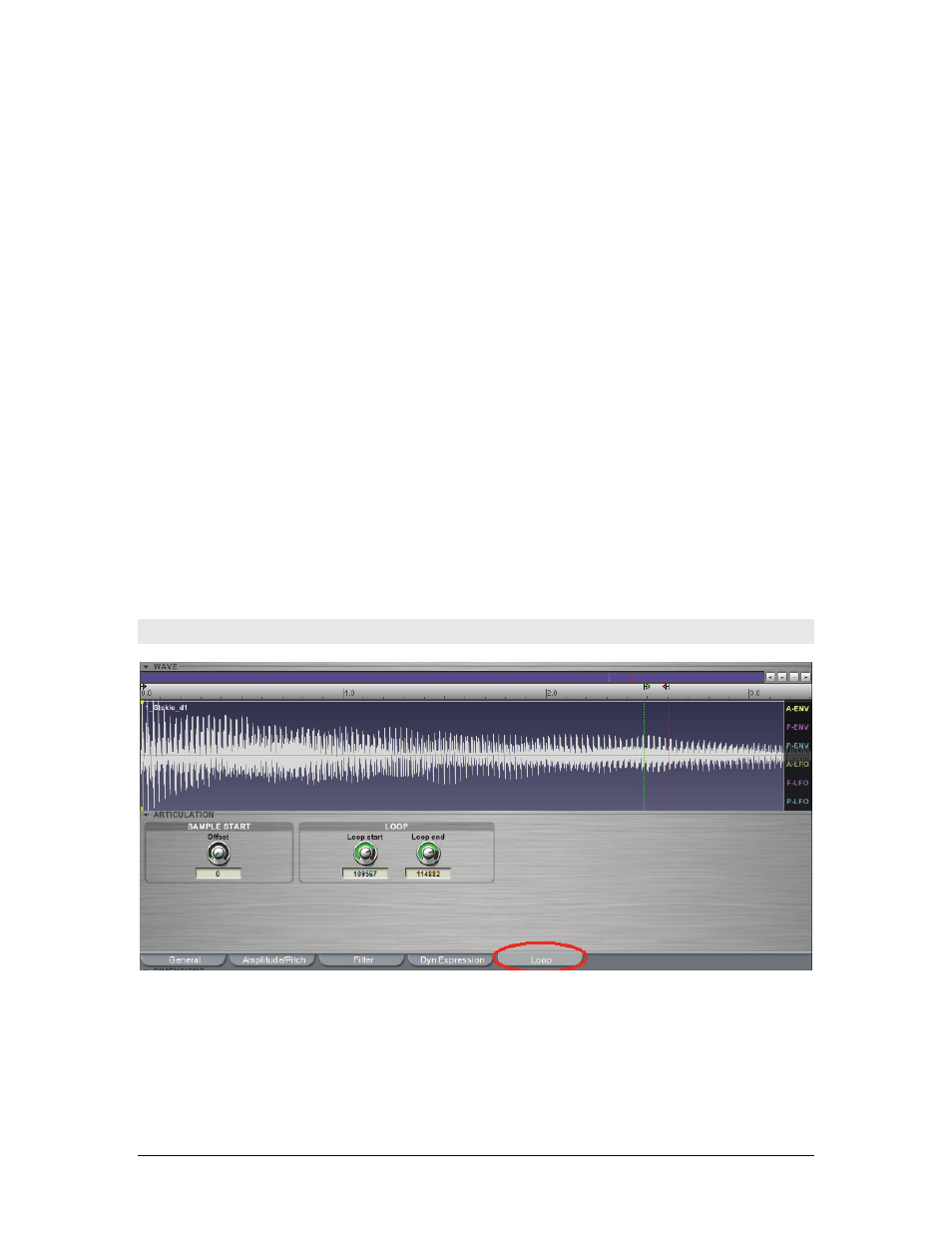Articulation section: loop tab – Teac GigaStudio 4 User Manual
Page 109

GigaStudio 4 Reference Manual
109
Giga’s morphing filters are composed of four independent parameters that affect the overall shape and volume
of the filter: cutoff frequency, Q, Q0H, and V0. Each parameter has a range of 0 to 127. The first three
parameters affect the timbre of the filter (frequency and Q) while the fourth parameter (V0) provides volume
compensation. These parameters are available for three different dynamics settings:
PP Coeffs:
Affect quiet or pianissimo dynamics (minimum filter setting)
MF Coeffs:
Affects moderate or mezzo forte dynamics (median filter setting)
FF Coeffs:
Affects loud or forte dynamics (maximum filter setting)
When the filter modulator is at zero, the PP parameters are used. The MF and FF parameters are used when the
modulator is at its midpoint (64) and maximum (127) respectively. For all other positions of the modulation
source, the parameter values are continuously interpolated or “morphed” between. By morphing between
filter coefficients, the DEF filter creates phase accurate real-time crescendos and decrescendos using a single
sustaining note, effectively replacing the need for layered crossfade instruments that increase polyphony and
introduce phase problems.
Following are the parameters for each of the Coefficients.
Cutoff :
Determines the initial center frequency for the Q0 Quality factor.
Q:
Simultaneously determines gain, Quality (filter width), and a center frequency offset relative to the initial
Fc setting.
Q0H:
This high frequency quality factor has a fixed center frequency near 7.5kHz and is especially helpful in
de-emphasizing the harsh overtones of upwardly transposed samples.
V0
: While designed to compensate for any gain attenuation imposed by the filter, you can also use V0 to
increase the dynamic range of an instrument, achieving softer pianissimos and bolder fortes.
Articulation Section: Loop Tab
Looping is the process of defining a section of the sample to repeat over and over, thus providing a sustained
sound. A loop start and loop end define this section. Being able to zoom in and out on the waveform, and
navigate through it, is crucial to the process of looping.
Note: Enabling and disabling loop points can be done only using the GS4 Editor application.